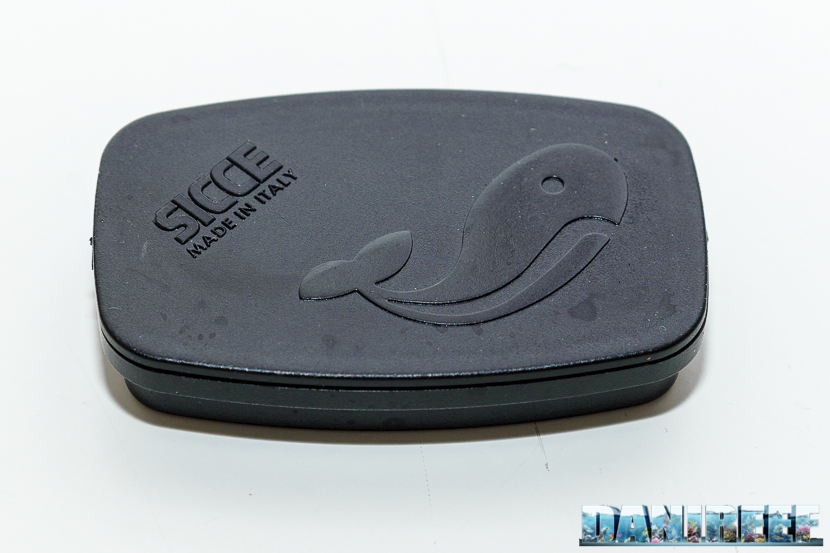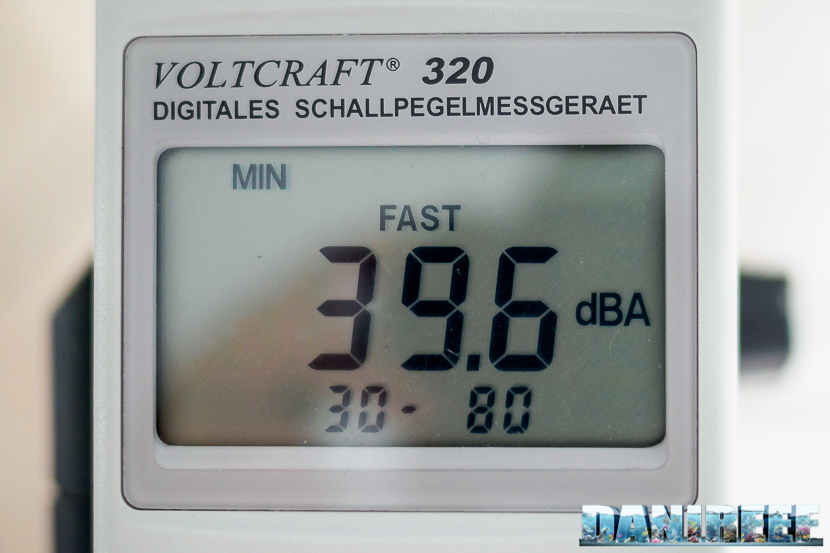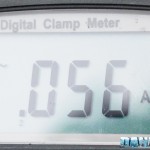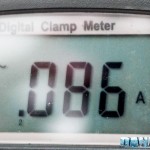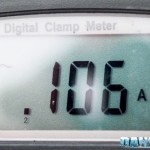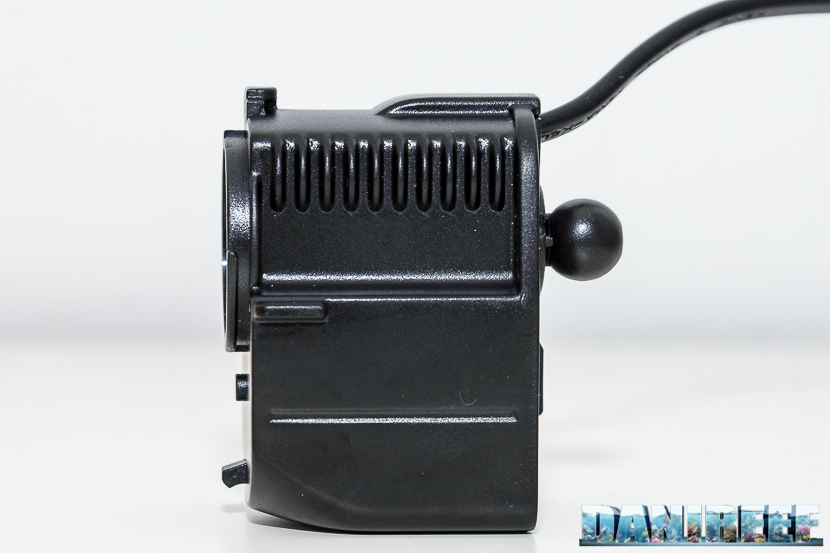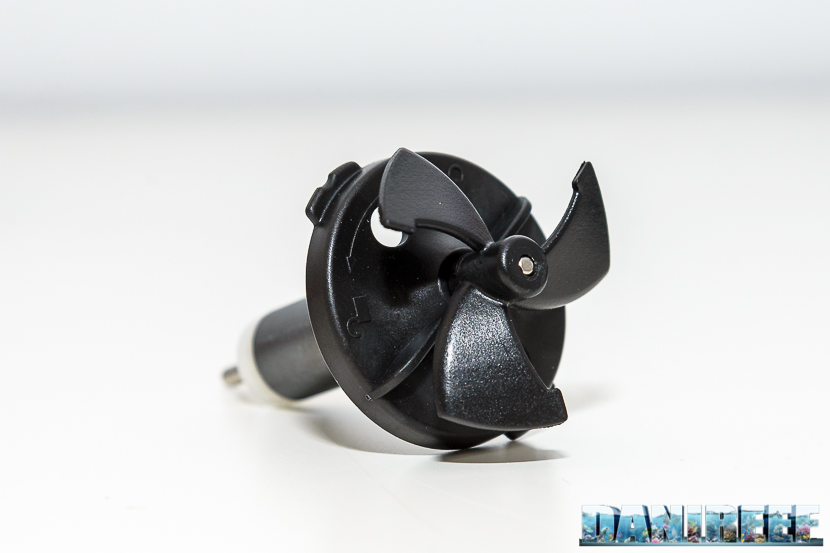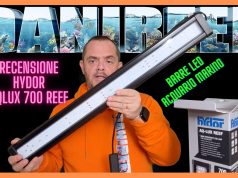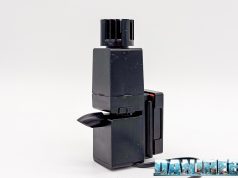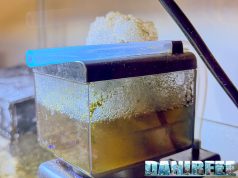The Magnet
The holding mechanism is made up by a magnet with a holding strength for glasses up to 20 mm thick. My tank glasses are 15 mm thick, and I had no problem at all.
Noise
Sicce XStream-E seemed really silent from the beginning. We were still curious to measure noise emission.
First we measured environmental noise.
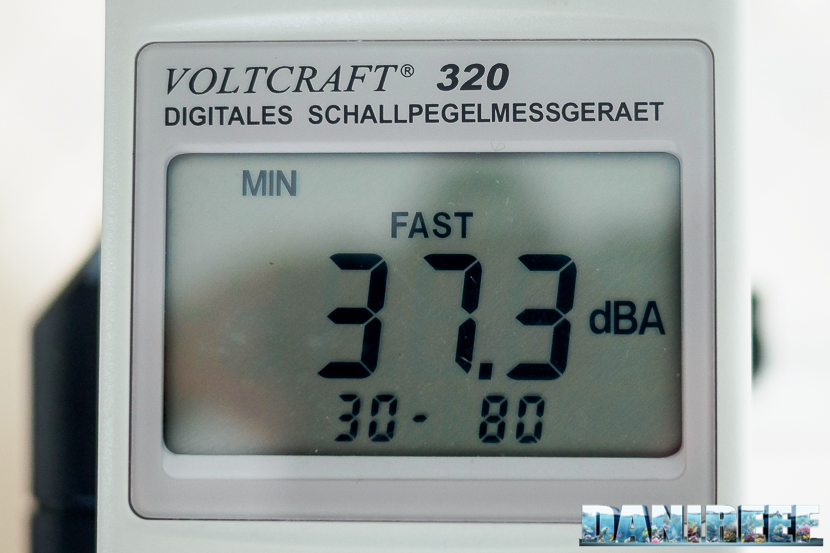
Right after that, we measured the noise with the pump on.
The 2.3dB difference is really a really low value. This pump doesn’t make much noise at all.
To measure the noise I used, as always, the professional phonometer VOLTCRAFT 320, digital phonometer IEC 651 Type II which has been sufficiently accurate seeing the results. Considering the type of noise we needed to measure, all the measures were recorded with dBA wave attenuation. The measurements were taken with closed windows, the phonometer placed on a tripod 1 meter distant, and with minimum intervals of 120 seconds between measurements.
Sicce XStream-E Power Consumption
It is quite hard to measure instant energy consumption. In order to do so I used a current probe which recorded an electric current of 0,134 A. This is only a partial measure, as it has been impossible to record the power factor (cosφ). Anyway, we can still make some interesting deductions.
We tried to get measurements for each functioning mode to evaluate the difference in power consumption at different flows.
The adsorbed current, or the power consumption, results as follows:
- Flow rate 3.000 l/h: 0,043A x 230 V = 9,89 watt x cos(fi)
- Flow rate 4.500 l/h: 0,056A x 230 V = 12,88 watt x cos(fi)
- Flow rate 5.500 l/h: 0,070A x 230 V = 16,10 watt x cos(fi)
- Flow rate 7.000 l/h: 0,086A x 230 V = 19,78 watt x cos(fi)
- Flow rate 8.500 l/h: 0,106A x 230 V = 24,38 watt x cos(fi)
Usually a pump with a neodymium magnet, like the Sicce XStream-E, has a cos(fi) with a value around 0,85, while a pump with a ferrite magnet has a cos(fi) around 0,6. In this case the energy consumption of the Sicce XStream-E needs to be corrected with the cos(fi) of 0.85:
- Flow rate 3.000 l/h: 0,043A x 230 V x cos(fi)= 8,4 watt
- Flow rate 4.500 l/h: 0,056A x 230 V x cos(fi)= 10,9 watt
- Flow rate 5.500 l/h: 0,070A x 230 V x cos(fi)= 13,7 watt
- Flow rate 7.000 l/h: 0,086A x 230 V x cos(fi)= 16,8 watt
- Flow rate 8.500 l/h: 0,106A x 230 V x cos(fi)= 20,7 watt
The measured value is a little higher that the one declared, but considering that we could not measure the cos(fi), it seems to be a legitimate value.
The apparent current of 3.7 watt resulting from 24,38-20,7 watt at maximum power is not registered by our home electrical counter, so we will not spend more. Moreover, this happens with any pump, Sicce is not an exception.
Considering an energy consumption of 20,7 watt, and the energy price in Italy of 0,27 euro per kwh, we could use this pump continuously at its maximum rate for a whole year with a power consumption of 181 kwh, which will clearly be the same using a pair of Sicce XStream-E alternately for 6 hours each, resulting in 48.95 euros per year, or 4.07 euros per month.
This number would actually be lower if the random mode is used, but exactly because it is random we cannot estimate how much that would be in a year.
The impeller has an easy unlocking mechanism, you just need to turn its base fitted in the pump body and pull it out.
Being electronic the pump as an external power supply. The plug has a weird shape that probably won’t fit the most commonly used multi-plug adapters.
Sicce XStream-E Controller
This pump, besides being efficient with an adjustable flow rate and low noise, is also electronic and needs to be programmed. If the programming is easy, is also not that refined… but being the first attempt by Sicce at manufacturing electronic pumps the results are remarkable: the controller doesn’t need to be purchased separately like for Tunze pumps, it’s very easy to use and included in the package.
The controller, as seen above, has only two switches marked by two arrow indicators. One is for reducing the flow rate, the other for increasing it.
The pump can work with three different modalities. Constant speed, programmed flow or controlled by an external driver to be plugged in the controller base.
Using the constant speed mode the pump works at three different flow rates between 3000, 5500, 7000 or 8500 l/h. The 5 blue led indicators stand for the maximum rate, at each touch of the arrow down we can decrease them to the following lower rate.
If we touch both arrows simultaneously we select the pulse mode. If we touch one switch once we select short pulse cycle 5 seconds, twice for medium pulse cycle of 20 seconds, thrice for 30 seconds long pulse, and four times for the random pulses between 5 and 30 seconds. The maximum flow rate at random mode is that set for the constant speed mode. It’s easy and more or less intuitive.
It’s superfluous to say that I prefer the random pulse mode rather than the maximum flow.
To set them, you just basically need to switch on the pump and increase the flow rate up until all 5 leds are on, then touch both arrows to enter the programing mode and then touch the arrows till only the last led is on, indicating the random pulse mode.






